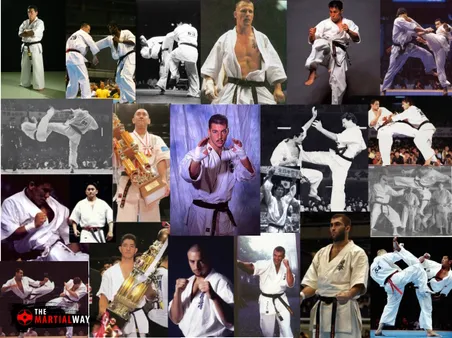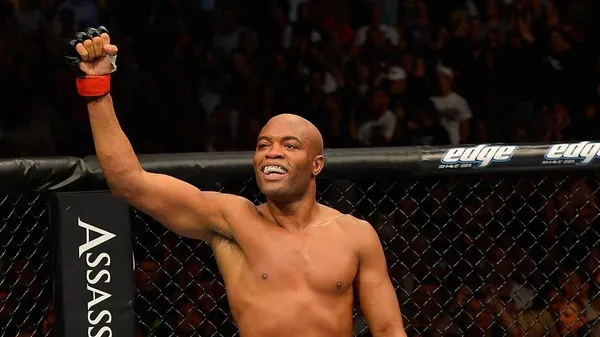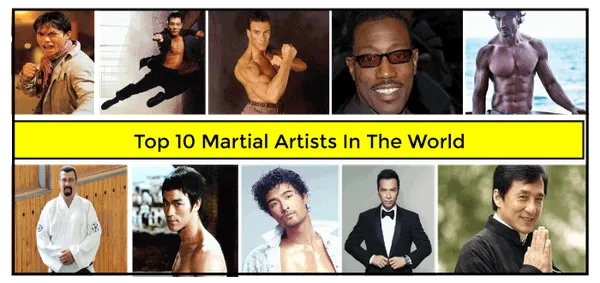Table of Contents
Throughout history, the world has witnessed extraordinary martial artists and fighters who have captivated audiences with their exceptional skills and unwavering dedication. From the legendary Bruce Lee to the modern-day icons of mixed martial arts, these individuals have left an indelible mark on the world of combat sports. Join us on Kizworld as we delve into the lives and achievements of The most famous martial artists and fighters of all time, exploring their remarkable journeys, iconic battles, and lasting legacies.
The Most Famous Martial Artists and Fighters of All Time: Legends and Icons
I. The Illustrious Pioneers of Martial Arts and Fighting
The Illustrious Pioneers of Martial Arts and Fighting
Ancient Warriors: The Roots of Martial Arts
Martial arts originated in ancient times as a means of self-defense and combat. Early warriors developed techniques to protect themselves and their communities from danger, forming the foundation of martial arts as we know it today.
- Shaolin Temple: The birthplace of Kung Fu
- Ancient Greek Pankration: A combination of wrestling and boxing
- Indian Kalaripayattu: A comprehensive martial system from Kerala
Legendary Figures: Masters of Martial Arts
Throughout history, martial arts have been graced by legendary figures whose skills and teachings have shaped the art form. These masters dedicated their lives to perfecting their craft, inspiring generations of martial artists.
Name | Martial Art | Legacy |
|---|---|---|
Bruce Lee | Kung Fu, Jeet Kune Do | Revolutionized martial arts with his innovative approach |
Muhammad Ali | Boxing | 'The Greatest' known for his speed and agility |
Mas Oyama | Kyokushin Karate | Founded Kyokushin Karate, known for its full-contact sparring |
Iconic Battles: Defining Moments in Martial Arts History
Martial arts history is replete with iconic battles that showcased the prowess of legendary fighters. These encounters cemented the reputation of martial arts as a formidable and respected discipline.
- The Battle of the Five Shaolin Masters: A legendary confrontation between five Shaolin masters and a Qing dynasty general
- The Rumble in the Jungle: Muhammad Ali's iconic fight against George Foreman in Kinshasa, Zaire
- The Gracie-Inoki Fight: A clash between Brazilian Jiu-Jitsu and Japanese professional wrestling
Conclusion
The illustrious pioneers of martial arts and fighting continue to inspire and captivate audiences worldwide. Their remarkable skills, unwavering dedication, and legendary battles have elevated martial arts to an art form revered by millions.
II. Unparalleled Masters: Legends of Martial Arts
Unparalleled Masters: Legends of Martial Arts
At the very pinnacle of martial arts, there stand a group of individuals who have transcended their disciplines and become true legends. These masters possess unparalleled skills, honed through years of intense training and unwavering dedication. Their achievements and influence have left an indelible mark on the world of martial arts, inspiring countless practitioners and captivating audiences with their incredible feats. In this section, we pay homage to these legendary figures and explore their remarkable contributions.
One name that immediately comes to mind is Bruce Lee, widely regarded as the greatest martial artist of all time. With his lightning-fast strikes, innovative techniques, and captivating charisma, Lee revolutionized the world of martial arts and became a global icon. His films, including "Enter the Dragon" and "Fist of Fury," captivated audiences worldwide and helped to popularize kung fu in the West.
Achievement | Impact |
Founded the revolutionary martial art of Jeet Kune Do | Introduced new concepts and techniques to the martial arts world |
Starred in groundbreaking martial arts films | Popularized kung fu and martial arts to a global audience |
Became a cultural icon and inspiration | Influenced countless martial artists and filmmakers |
Another legendary figure in the realm of martial arts is Muhammad Ali, the greatest boxer of all time. Ali's exceptional footwork, lightning-fast jabs, and powerful punches earned him the title of "The Greatest." His iconic fights, including the "Rumble in the Jungle" and the "Thrilla in Manila," are etched in the history of boxing. Beyond his athletic achievements, Ali was also a vocal advocate for social justice and became a symbol of courage and perseverance.
- Won the world heavyweight championship three times
- Defeated some of the greatest boxers in history, including Joe Frazier and George Foreman
- Became a global icon and inspiration
- Used his platform to fight for social justice
The world of martial arts is also graced by the presence of Jackie Chan, a true master of kung fu and action cinema. With his acrobatic stunts, comedic timing, and infectious charisma, Chan has entertained audiences around the world. His films, such as "Drunken Master" and "Rush Hour," have become classics of the genre and have helped to popularize kung fu and martial arts to a wider audience.
III. The Arena's Finest: Iconic Fighters in History
The Arena's Finest: Iconic Fighters in History
The Warriors of the Ancient World
In the ancient world, gladiators, warriors, and wrestlers captivated audiences with their incredible skill and courage. From the Roman Colosseum to the Greek Olympics, these fighters displayed unmatched strength, speed, and determination. Their names, such as Milo of Croton, Leonidas of Sparta, and Boudica of Britain, have become legendary, inspiring awe and admiration for centuries.
Related Post: The Most Famous Warriors and Gladiators of Ancient History
Name | Known for | Era |
|---|---|---|
Milo of Croton | Unmatched strength, won Olympic wrestling titles | 6th century BCE |
Leonidas of Sparta | Led the Spartans at the Battle of Thermopylae | 5th century BCE |
Boudica of Britain | 率领凯尔特人反抗罗马人 | 1st century CE |
The Knights of the Middle Ages
During the Middle Ages, knights emerged as fierce warriors, clad in armor and wielding swords. They fought in tournaments and battles, displaying their prowess in jousting, swordsmanship, and archery. Figures like King Arthur, Richard the Lionheart, and El Cid became symbols of chivalry and valor.
Related Post: The Most Famous Knights and Warriors of the Middle Ages
- King Arthur: Legendary British king and leader of the Knights of the Round Table
- Richard the Lionheart: King of England and renowned warrior during the Crusades
- El Cid: Castilian knight and military leader who fought against the Moors in Spain
The Samurai of Japan
In feudal Japan, the samurai emerged as a class of elite warriors, known for their strict code of honor and their mastery of martial arts. These highly skilled fighters wielded swords, bows, and spears with incredible precision and discipline. Names like Miyamoto Musashi, Uesugi Kenshin, and Oda Nobunaga are synonymous with samurai prowess and strategy.
Related Post: The Most Famous Samurai Warriors and Shoguns of Japanese History
IV. Across Cultures and Time: Martial Arts' Enduring Legacy
Across Cultures and Time: Martial Arts' Enduring Legacy
The rich history of martial arts extends far beyond the boundaries of any single culture or region. Across different societies, martial arts have evolved in diverse forms, each with its own unique set of techniques, principles, and philosophies. Some of the oldest forms of martial arts have originated in ancient China, including kung fu, tai chi, and wing chun. These disciplines have a long history of use in self-defense, health and well-being, and spiritual development.
In other parts of the world, martial arts have developed independently. For instance, karate and judo originated in Japan, while taekwondo originated in Korea. These martial arts have gained immense popularity around the world and have become symbols of their respective cultures.
Martial Art | Country of Origin | Focus |
|---|---|---|
Kung Fu | China | Self-defense, health, and spiritual development |
Tai Chi | China | Health and well-being |
Wing Chun | China | Self-defense |
Karate | Japan | Self-defense |
Judo | Japan | Grappling and throwing techniques |
Taekwondo | Korea | Self-defense and striking techniques |
Martial arts have become integral parts of cultural identities, and their practices and philosophies have been passed down from generation to generation. They have also played significant roles in shaping military strategies, combat techniques, and physical training methods throughout history.
Regardless of their origins, martial arts share common themes, including discipline, respect, and the pursuit of excellence. They emphasize the development of physical and mental strength, as well as the ability to defend oneself effectively. Martial arts also provide a sense of community and belonging, bringing together individuals from different backgrounds and cultures.
Related post History and Philosophy of Martial Arts.
In addition to their physical and spiritual benefits, martial arts also have a profound cultural and historical significance. They reflect the values, beliefs, and traditions of the societies that created them. Martial arts serve as a window into the past, providing insights into the cultural heritage and the evolution of human civilization.
Another important aspect of martial arts is their adaptability. Over time, they have evolved and incorporated elements from other martial arts, as well as modern scientific knowledge and techniques. This continuous evolution helps martial arts remain relevant and effective in ever-changing times.
V. The Universal Language of Self-Defense
At their core, martial arts are about self-defense. They equip individuals with the necessary skills and techniques to protect themselves from harm. This universal language of self-defense transcends cultural and regional boundaries, uniting martial artists around the world.
Martial arts provide a platform for individuals to develop confidence, resilience, and a sense of empowerment. They teach practitioners to assess dangerous situations, make quick decisions, and respond effectively to threats. Beyond self-defense, martial arts also instill a sense of personal responsibility and responsibility for one's actions.
Related post Benefits of Martial Arts for Physical and Mental Health.
Martial arts have a transformative impact on individuals both physically and mentally. They enhance physical fitness, improve flexibility, and strengthen muscles. Martial arts also promote mental well-being by reducing stress, improving focus, and boosting self-esteem. Additionally, they teach practitioners to cultivate patience, perseverance, and respect.
With their universal appeal and practical benefits, martial arts continue to captivate individuals worldwide. They have become a symbol of human resilience, embodying the pursuit of excellence, the defense of justice, and the cultivation of inner peace.
Martial Art | Country of Origin | Key Techniques |
|---|---|---|
Kung Fu | China | Punches, kicks, blocks, and grappling |
Tai Chi | China | Slow and gentle movements for health and well-being |
Wing Chun | China | Efficient and practical self-defense techniques |
Karate | Japan | Striking techniques with hands, elbows, and knees |
Judo | Japan | Grappling and throwing techniques |
Taekwondo | Korea | Powerful kicks and strikes |
Whether practiced for self-defense, fitness, or personal growth, martial arts offer a path for individuals to unlock their full potential, transcend cultural boundaries, and experience a deeper sense of purpose and fulfillment.
VI. Conclusion
The martial arts and fighting world is a vast and ever-evolving landscape, with new legends emerging all the time. However, the individuals featured in this article stand as some of the most iconic and influential figures in the history of combat. Their contributions to their respective disciplines have left an indelible mark on the world, inspiring generations of martial artists and fight fans alike. Whether it's the lightning-fast strikes of Bruce Lee, the graceful power of Jackie Chan, or the dominance of Jon Jones, these martial artists and fighters have cemented their place among the greatest of all time.